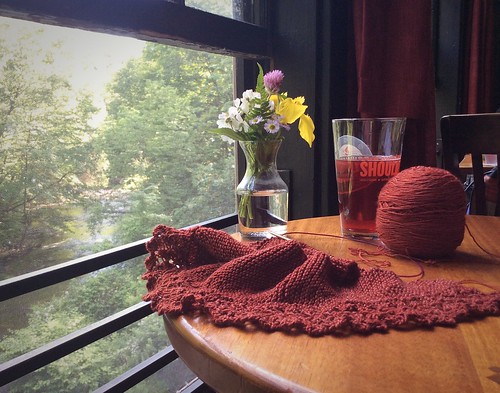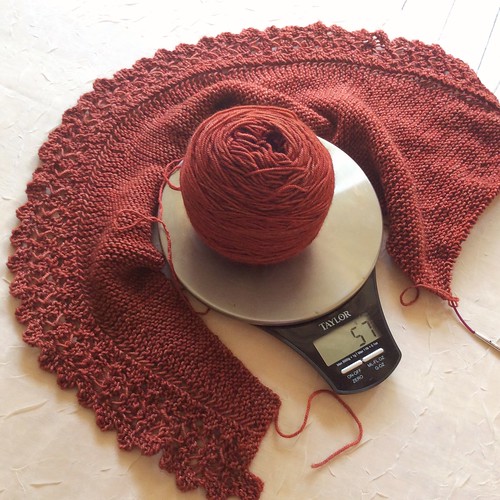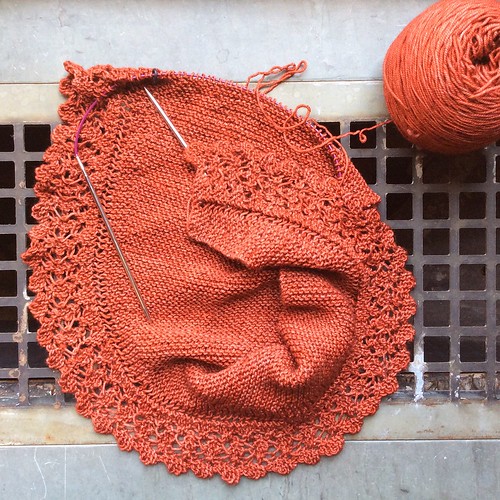This summer I've been working on a new sample of my Streusel scarf pattern. It's one of those triangular scarves/shawls worked end-to-end, where the shape results from increases during the first half of the scarf and decreases during the second half. It's a simple construction and—since much of the knitting is garter stitch—you really only have to pay close attention when you're working the lace section of each row. That makes scarves like Streusel or shawls like Hop Brook very nice summer/travel knitting.
But there's a danger with this type of scarf or shawl: If you use up more than half your yarn during the increase section, you will run out of yarn before you get to the end of the decrease section. You'll have to rip back a long way. And that's pretty frustrating!
So here's where a scale is truly your friend: weigh your yarn at the outset. As you approach the midpoint of the scarf, start checking the weight of the remaining yarn. Be sure to start the decrease section before you've used up more than half your yarn.
For example, my skein of Periwinkle Sheep Delirium weighed 100 grams. I'd like to make my Streusel as long as possible, so I will knit the increase section until I have at least 52 or 53 grams left (I like to play it safe). Then I'll start the decrease section. That way, I won't run out at the other end of the scarf.
For these types of scarves/shawls, it's also a good idea to swatch—and to block your swatch—before you start the project. If your stitch and/or row gauge is significantly looser than the gauge the pattern states, you'll use more yarn and you might run out (because bigger stitches = more yarn).
Knitters sometimes think gauge doesn't matter in items where fit isn't crucial, but I think gauge matters pretty much always. It affects both your yardage as well as the finished look and feel of the blocked piece. If your gauge is much looser than the designer intended, your finished piece will not only be larger but the stitches may look sloppy, with little definition. The fabric might have so much drape that the scarf or cowl becomes limp and lifeless. If you like the appearance of the designer's sample but you need or want to substitute a different yarn, choose a yarn with a similar fiber content and be sure to swatch. If needed, change your needle size to get the same gauge.
I'm knitting Streusel with Delirium, a new yarn coming out soon from Periwinkle Sheep (I was lucky enough to get a skein in advance). Delirium seems pretty perfect for lace—my swatches with this merino/yak/nylon fingering weight yarn knit up and blocked beautifully. It's going to make its debut at Stitches Midwest, where Karin and her yarns will be at the Yarn Culture booth. If you're going to Stitches Midwest, stop by and tell her I said hello!





2 comments:
that is really a beauty!!!
Thanks, Steph!
Post a Comment